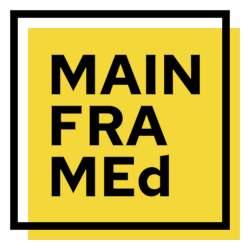Linux for zSeries Installation Workshop
Code: ZLNXBeen everywhere and found nothing…
Do you need a Custom Course or Solution?
Description
This course is a complete introduction to the installation of Linux on the zSeries platform. The use of the major Linux distributions is explained, including SUSE and Red Hat.
Online lab exercises are included, from preparing and loading the boot system right through to IPLing, logging on to the finished Linux system and basic server customisation.
All the installation techniques are explained (native, LPAR and VM and VIF) and the advantages and disadvantages of each are revealed. This hands on class covers everything a zSeries specialist needs to know to install Linux on their platform!
Audience
This course will benefit IBM z/OS systems programmers, network systems programmers, senior operators and technical managers. Indeed, anyone who works in the z/OS environment and needs to know how Linux is installed on zSeries platforms should attend.
Prerequisites
No previous experience of installing or working with Linux is required, although it would be an advantage.
Knowledge of the zSeries environment is also not required but a basic background will be assumed.
A basic knowledge of networking and TCP/IP addressing would be useful but is not essential.
Objectives
Delegates will learn to:
- Explain what Linux is and why it is important.
- Explain why Linux is being installed on the zSeries platform.
- Describe the main differences between GNU and IBM licensing.
- Describe how Linux is typically installed on a PC platform.
- List the zSeries hardware platforms on which Linux can be installed.
- Describe how Linux is typically installed on a zSeries platform.
- Explain what a Linux distribution is and list the main vendors.
- Describe how to obtain Linux for zSeries from major vendors.
- Describe how to obtain Linux installation documentation.
- Describe the main zSeries installation techniques.
- State the advantages and disadvantages of each installation technique.
- Explain how a new Linux system is installed in a native system or LPAR.
- Explain how a new Linux system is installed as a VM (or z/VM) guest.
- Understand the function and use of the vendor installation utility.
- Describe how to use the SuSE distribution to install Linux.
- Describe how to use the Red Hat distribution to install Linux.
- Provide basic customisation for the ProFTP and Apache (http) servers.
- Explain how to implement printer support in Linux.
- Understand how to install new software via RPMs.
- Understand how to install new software from source code.
- Describe basic post-install customisation options.
Topics
Introduction
What is Linux?
Linux and Unix Similarities.
Linux and Unix Differences.
Where did Linux come from?
Why Linux on zSeries?
Comparing GNU and IBM licensing.
Linux distributions.
An Age-Old Problem.
Installing Linux on a PC.
Installing Linux on zSeries.
Linux Installation Alternatives.
Installing Linux in Native and LPAR Mode.
Installing Linux under VM.
Linux capable zSeries platforms.
How to obtain Linux for zSeries.
Different Distribution Materials.
How to obtain Linux documentation.
Linux Installation Overview
Installation steps for Native, LPAR or VM installation.
Linux Filesytems and DASD Volumes.
How Much DASD Space?
Required configuration information.
Preparing the Hardware (Native & LPAR).
Preparing the VM Guest User.
Setting up a local FTP server for Linux installation.
Loading & IPLing the boot system in a VM guest.
IPLing the Linux boot system in LPAR or Native mode.
Building an IPLable tape for use with a Hardware Management.
Console (HMC).
The boot system IPL process.
The phase one installation overview.
Phase one installation examples.
The phase two installation overview.
Phase two installation examples.
Post installation customisation.
Installing Linux (Phase One)
Installation Steps.
The Example Hardware Configuration.
IPLing the driver system from the HMC.
Network Attachment Options.
Ethernet Attachment Definition.
IUCV (z/VM) Definition.
CTC Definition.
Device Independent Definitions.
End Of Phase One.
Installing Linux (Phase Two)
Installation Steps.
The Example Hardware Configuration.
Running the Phase Two Install Script.
Identifying the DASD Volumes.
Formatting the DASD Volumes.
Verifying the Formatting Operation.
Identifying the Swap Device.
Identifying the Root Device.
Specifying the FTP Server Parameters.
Specifying the Packages to Install.
Selecting your Time Zone.
Configuring the Network.
Adding a New User & Providing a Root Password.
Turning on the Servers.
Writing the IPL Text.
Completing Phase Two Installation.
Installing Linux (Post-Install)
The Example Hardware Configuration.
IPLing your Linux System from the HMC.
Checking the install.log File.
How much Space did we use?
Adding and Deleting Users.
Working with Files and Directories.
Using the Online Manuals.
Using the vi Editor.
Defining Local Hosts.
The RPM Command.
What Packages were Installed?
Checking the FTP Server Installation.
What Version of the FTP Server is Installed?
Customising the proftpd.conf File.
Setting Up the FTP User.
Checking the HTTP Server Installation.
What Version of the HTTP Server is Installed?
Customising the httpd.conf File.
Verifying the Apache is Working.
Printing from Linux.
LPR/LPD Operation.
LPR/LPD Queue Management Commands.
Checking the LPR/LPD Configuration.
What Version of LPR/LPD is Installed?
Customising the /etc/printcap File.
Testing your LPR/LPD Configuration.
Managing A Linux System
Obtaining Information.
Installing & Updating Linux Software.
Installing Software Using RPM.
Verifying Software Installation using RPM.
Uninstalling Software using RPM.
Installing Software from Source.
Uncompress and Extract the package.
Read the README File.
Configure the Product for your System.
Compile the Source Code.
Check the Compilation (optional).
Install the Programs.
Post-Installation Customisation.
Installing Updates & Fixes using Patch.
Unpack and Extract the Patch File.
Apply the Patches.
Appendix A: Acronyms and Abbreviations
Glossary.
Appendix B: GNU/GPL and IBM Licenses
GNU/GPL License.
IBM Non-Warranted License.
Appendix C: Online Lab Exercises
Lab 1. Booting install system & phase one installation.
Lab 2. Phase two installation (part 1).
Lab 3. Phase two installation (part 2).
Lab 4. IPL of the finished system and basic server customisation.
Lab 5. Installing additional software (optional).
Price (ex. VAT)
Duration
Schedule
- virtual
- 02-03-2026 - 03-03-2026
- register
Delivery methods
- Classroom
- On-site (at your location)
- Virtual (instructor online)
